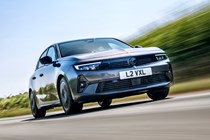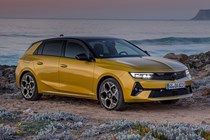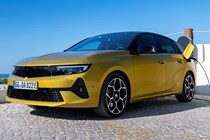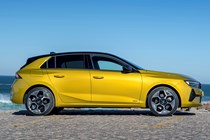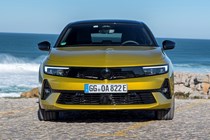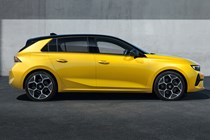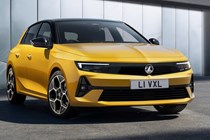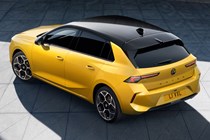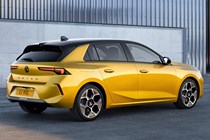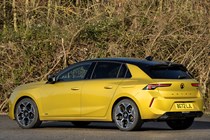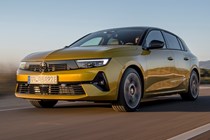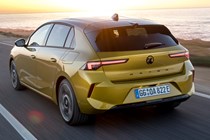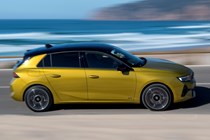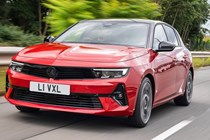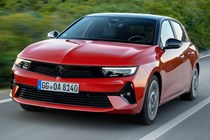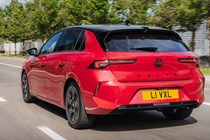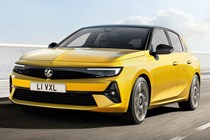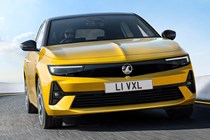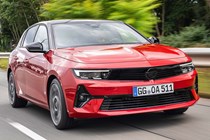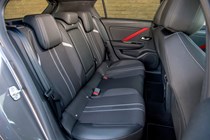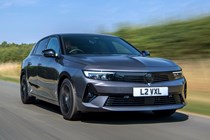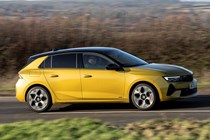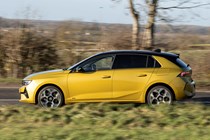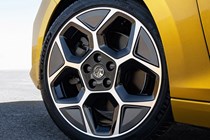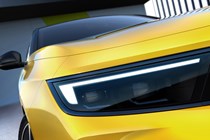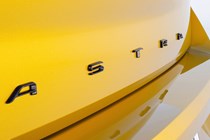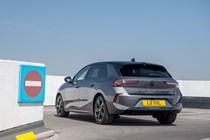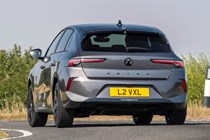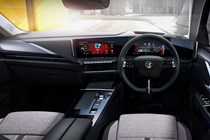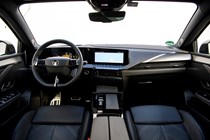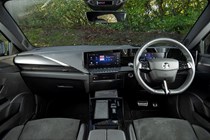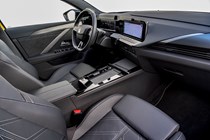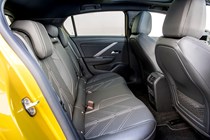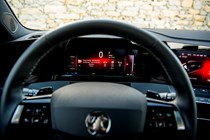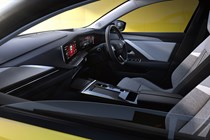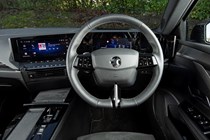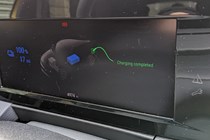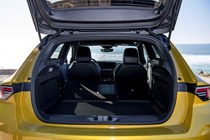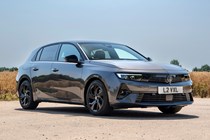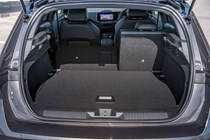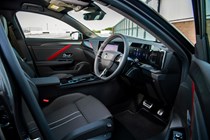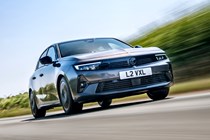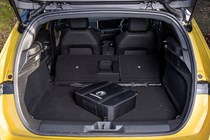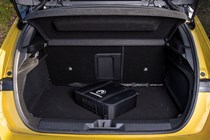
Vauxhall Astra long-term test

Want to drive electric, but your lifestyle isn’t right for it? Then how about a plug-in hybrid? We’re running an electrified Vauxhall Astra long-term test for six months – on battery for local work and petrol for long distances – to see if it works for us. And more importantly, how much it costs.
Reports by Keith Adams.

Jump to:
- Cabin and controls
- Performance, handling and economy
- Range and charging
- Comfort and refinement
- Second opinion
- Verdict
Update 1: Welcome
Introducing the Vauxhall Astra Ultimate Plug-in Hybrid 1.6 Turbo
Welcome to the extended long-term review of the Vauxhall Astra – a highly recommended choice in our 2023 Car of The Year gongs for the Best Value Car award. The Astra has impressed our test team for its good looks, excellent driving experience and high-quality, easy-to-use interior.
So, it’s good. You’ve already read the review and you know that. This is a family hatchback that’s been rebooted since Vauxhall became part of the giant Stellantis Group, with its cars now being closely based on the latest Peugeot models. That’s quite a shift, because the French firm’s current range are a flamboyant line-up and that’s a million miles away from Vauxhall’s previous rather bread ‘n’ butter models.
We’ve gone for the plug-in hybrid, which has a 12.4kWh battery and 110hp electric motor combined with its 150hp petrol engine upfront for a maximum claimed battery-only range of 43 miles which covers most normal commutes. Will it match those claims? We’ll get back to that in a later update.
Check out the Vauxhall Astra specs page on Parkers for the entire range – especially worth bearing in mind when it comes to pricing up your car.
What you get with an Astra Ultimate
Let’s start by saying this is the absolute bells and whistles Astra, and as such is packed with kit that most people won’t get as part of theirs. As standard, Astra Ultimate costs £36,115, Here are the top five features you get as standard:
- Adaptive LED headlights
- Adaptive cruise control and lane departure warning system
- 10.0-inch digital instrument cluster and 10.0-inch infotainment screen
- Wireless Apple CarPlay/Android Auto
- Head-up display
So, it’s not exactly short of equipment as standard. But despite that, we’ve picked £1,200-worth of optional extras, which I’ll go through in the next update.
The plan for this one is two-fold. When I’m working at the office, which is a 36-mile round trip, I intend to run it solely on electric, charged by my home 7kW wallbox, but then on high days and holidays, use petrol to get me up to my partner’s place up in West Cumbria – a 520-mile round trip.
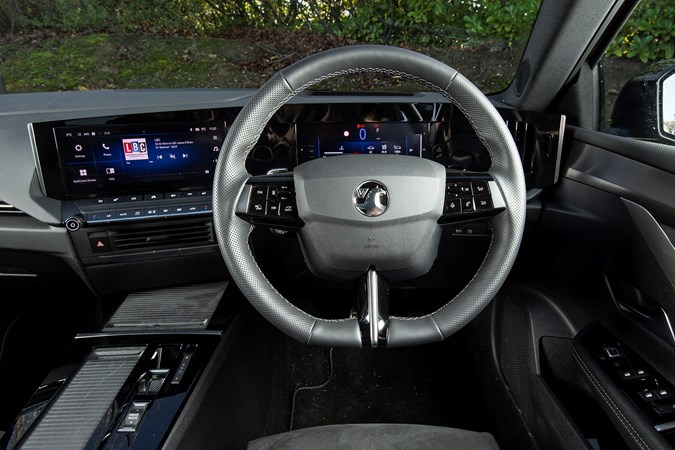
The Astra’s mid-sized family hatchback body should be the perfect package for me. It’s not too big, has a reasonable amount of room inside (I’m an empty-nester, so no real need to regularly use the rear seats), and drives very nicely indeed, with keen handling and long motorway legs.
The interior is a massive step forward over the last Astra, being smart, well equipped and made from high quality trim and materials. So far, the car buying friends and colleagues who have been in it noted its smart exterior styling and the appealing, inviting interior – a world away from the last Astra I ran back in 2012.
Over the coming months and thousands of miles, I’ll get deep under the skin of the Astra Ultimate and regularly using Britain’s motorways to see if a plug-in hybrid stacks up as a replacement for a more conventional diesel or petrol and whether commuting on battery and stacks up financially.
Update 2: Cabin, equipment and options
What’s the Astra Ultimate like to spend time in?
Vauxhall Astra long-term test, Long story short – the Astra’s interior is well put together, looks great, easy to use if a little cramped in the rear. And overall, I like it a lot although some of the tech isn’t perfect.
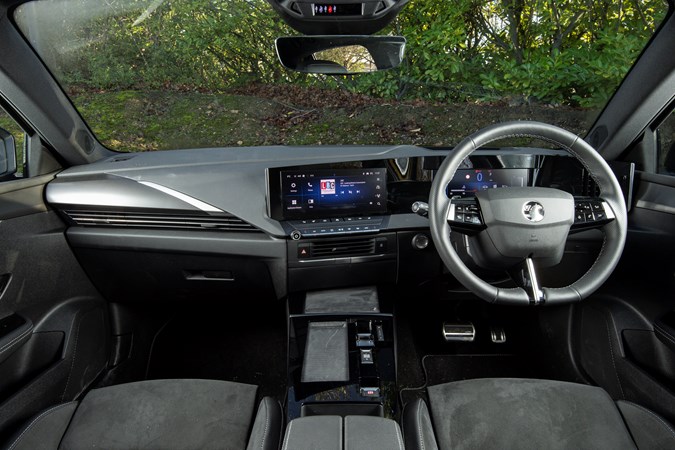
Family hatchbacks like the Astra have been staples of the UK automotive landscape since the late-1970s, but have been on the wane for the past decade or so as drivers switch to SUVs. And those who do stick to traditionally shaped hatches are plumping for premium offerings such as the BMW 1 Series, Audi A3 or Mercedes-Benz A-Class. And if they can’t stretch to that, the default offering is now the Volkswagen Golf.
This has meant that cars like this are required to work harder for a living. And you can see that Vauxhall has really upped its game with the latest Astra. It helps that my car is a range-topper, clad in Alcantara and gussied-up with the full equipment pack, but which ever model you choose, the interior is nicely styled and appointed, and if it’s not quite premium in its image, it certainly feels it in execution.
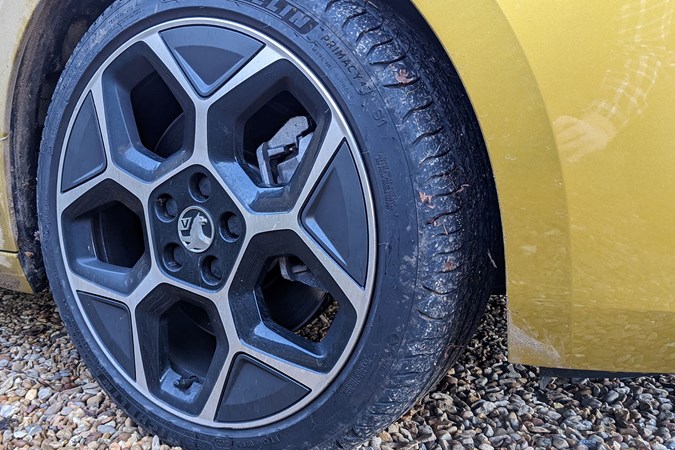
Optional extras: sorting the wheat from the chaff
I touched on the generous standard equipment of the Astra in Ultimate spec in my last update, but the optional extra fitted make for interesting reading. Here’s what’s been added:
- 7kW On Board Charger: £500
Worth it… No brainer, this one. Compared with the standard 3.3kW charger offered with the Astra, this upgrade more than halves the recharge time – on my home wallbox, the PHEV’s battery can be topped up from empty in a smidgen less than two hours.
- Two-coat premium metallic paint: £700
Worth it… Purely personal opinion this, but I love this colour as it stands out from the crowd and looks fantastic under blue skies. I suspect that most people might baulk at this, but there are some other ‘premium’ metallic shades that are less divisive.
Infotainment and tech
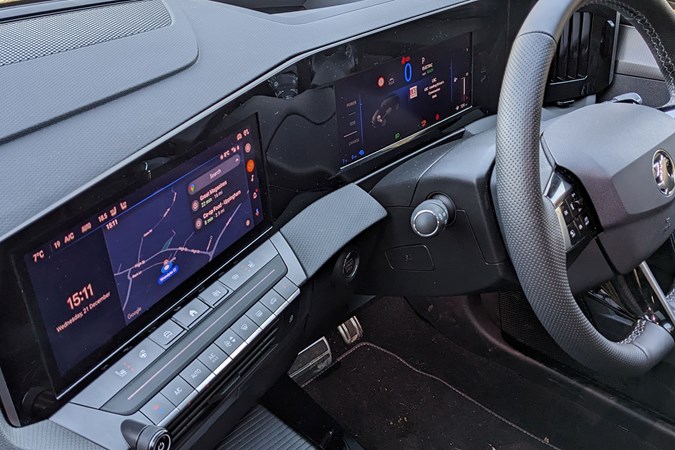
Dominating the interior is a slab of screen upfront. The black mirror ahead contains a 10.0-inch infotainment screen and a 10.0-inch instrument cluster, and it’s quite a step forward from what you’ve previously seen in an Astra. It has built-in sat-nav/DAB and the usual toys, but it’s also clear, bright and nice and responsive to use. Its wireless hook-up to both my phones has been a piece of cake, although some team members have reported it can be a bit glitchy and fussy about what lead you use to connect your phone to the car.
There are the usual moans reserved for all touchscreen systems in that fingerprints make it hard to look at unless you wipe it regularly. The good news is that you might not need to touch it as much as you think once it’s up and running. Vauxhall’s built-in voice recognition system works well, while a selection of buttons under the screen cover most common functions. Heck, there’s even a chunky rotary volume control – I like that.
I had an interesting moment, when the car prompted whether I would like to update the system when I parked up and turned it off. It was in the evening in town, and rather absent-mindedly, I just answered ‘yes’, then instantly realised that I’d disabled the car until the update was completed. Luckily I wasn’t in a rush, and just went for an hour’s walk – and when I returned, it had successfully updated.
Don’t do what I do… make sure it’s safely tucked up at home, when you say ‘yes’…
Update 3: Performance, handling and economy
How quick is it and how well does it drive?
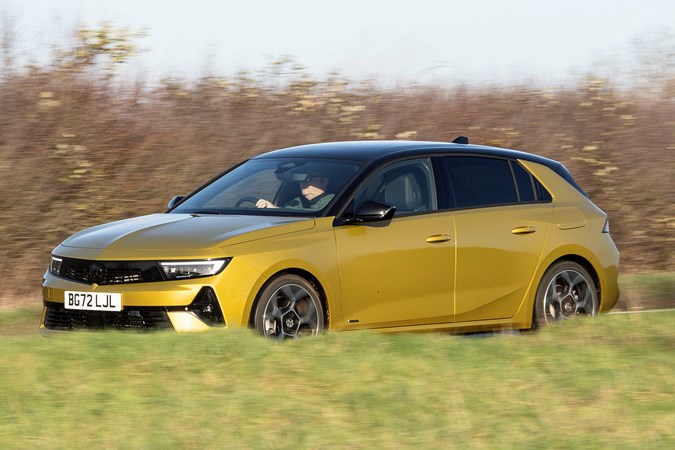
I’ve been racking up the miles in our Astra and with the odometer rapidly approaching 3,000 miles, it’s been getting under my skin – in a good way. My favourable early impressions of its hushed cruising and easy-going nature remain in place, but with a dash of back-road enthusiasm and eager performance building upon that. It’s also good to report that there’s enough fairy dust sprinkled over it to render it highly relevant in an SUV-dominated world.
Let’s start with the way it goes. This may be marketed as a family hatchback, but it’s quick enough out of the blocks to lead the pack, and even in electric mode only, it’ll raise an eyebrow as it chirps its front tyres. With a charged-up battery, and the car capable of deploying all of its 180hp, it charges away from the lights, making getting over a busy roundabout a cinch. However, the 0-60mph time of 7.7 seconds quoted by Vauxhall tells part of the story.
Mid-range overtaking is easy – floor it and the petrol engine picks up eagerly (if a little on the gruff side), while a noticeable burst of electric power is added into the mix – making dawdling trucks a minor inconvenience.
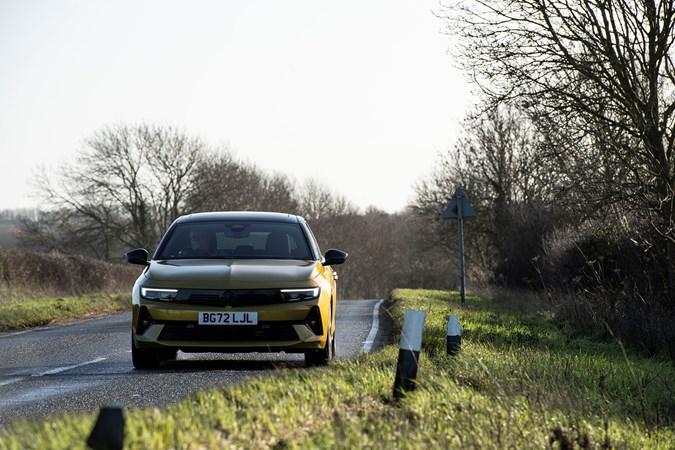
And the handling?
Part of this car’s thorough testing regime is racking up miles between the Parkers office in the East Midlands and my home in the Western Lakes. It’s a long commute of 250 miles, which I undertake regularly. It’s a motorway slog, where the Astra’s high-speed hush, supportive seats and excellent adaptive cruise control come into their own – but the final 40 miles or so are twisting B-roads that really test a car’s mettle.
And it’s good news. Considering the Astra replaces a Civic, our current car of the year, which we love for its dynamics, it’s putting in a great performance. Its steering might not be the last word in pin-sharp response, but it’s accurate and well-weighted in Sport mode, while the lack of roll and excellent body control mean that B-roads can be threaded confidently with a splash of fun in the right circumstances. The good news for passengers is that the supportive seats and bolted-down feel mean that they’ll feel a lot more comfortable than they might be in a typical SUV in challenging conditions.
The drive mode choices (Hybrid, Electric and Sport) don’t make too much difference to the way it steers aside from the way the throttle responds – but the overall competence of the Astra means it’s not really necessary. I’m fascinated to see how more sporting versions will feel on the roads.
An early comment on fuel consumption
With a decent amount of miles on the clock, I’m now getting a good idea of how the plug-in hybrid fits into my life, and what the fuel consumption is looking like as part of the Vauxhall Astra long-term test. For local running, I’m using the car purely in hybrid mode (mainly as in these cold winter months, battery-only range of about 20 miles doesn’t look great) and charging it up every night on my home wallbox. But for long-distance runs, I’m forgoing public charges (to avoid the delays and queueing) and going purely petrol.
The numbers so far look like this. On petrol only, and on longer motorway runs, the Astra is averaging 41.7mpg, which when you consider its 180hp power output and decent performance, is more than acceptable. Of course, the Honda it replaces gets nearer 50mpg in the same situation, but that doesn’t have the capability of EV-only running in town.
Using a combination of battery and petrol, on 50-80-mile days in hybrid mode, that improves significantly to 83.1mpg. One of the advantages of running in this mode is that the car tells you how much battery-only running you’re doing in a day, and that figure tends to hover around 40% with the EV juice depleted by 80 miles. What it doesn’t do is get anywhere near the WLTP claim of 256mpg – but in a later update I intend to see how I can really maximise this car’s PHEV potential.
Update 4: range and charging (winter edition)
How easy is it to charge up and how far does it go?
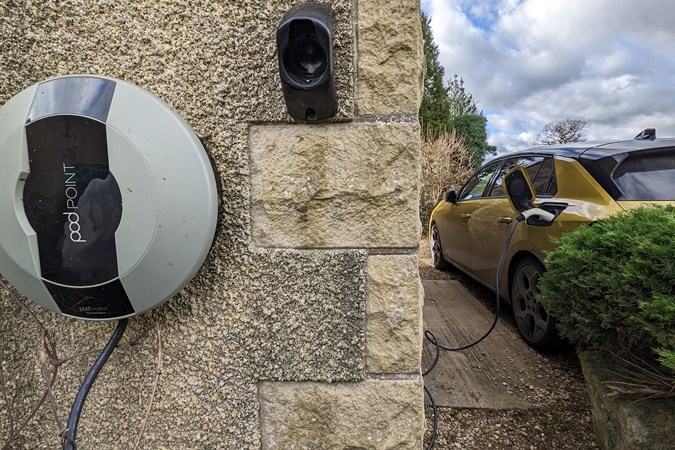
When we took ownership of the Vauxhall Astra, we knew that a lot of the story was going to be about the plug-in aspect of ownership. Well, we can say that in the best part of 5,000 miles of winter driving, we’re getting a handle on how the Astra is performing, how much electricity it’s using and what implications that’s having for fuel economy.
The first thing that’s worth pointing out is that as a car for commuting in, it’s doing pretty well. I am fortunate enough to have a charge point at home and at the office, and if I plug it in after every local journey, I can run it pretty much exclusively on electricity alone.
However, even when running in pure electric mode, if you hit a really steep hill, the engine can cut in. With a 100% charge, the car reports a range of between 17 and 23 miles – which is okay, but tempered by Vauxhall’s claim that it’ll go 43 miles. I’m waiting for the summer for a definitive answer, but it’s not looking too good at the moment.

Once on the move, the range reported is reasonably accurate, which is no bad thing. With the air-con set at 19.5 degrees on auto and the seat heaters on, I’ve managed a best of 19 miles – I’m hoping this will improve come the spring.
The hybrid mileage is already improving, with an average of 121mpg in local hybrid running, keeping the battery charged up at home. For a recharge of the 12.4kWh battery pack from empty, my Astra costs me £4.09 to top up at home (I am paying 33p/kWh for my electricity). Needless to say I’ll be keeping a close eye on the numbers and reporting back once the warmer weather returns.
Finally, it’s worth saying right now, the longer I live with the Astra, the more I like it. I like the way it looks, its easy-going demeanour and its ability to demolish long motorway journeys. Everyone I know loves the way it looks and the eye-searing colour – such a step change over the old Astra in terms of desirability.
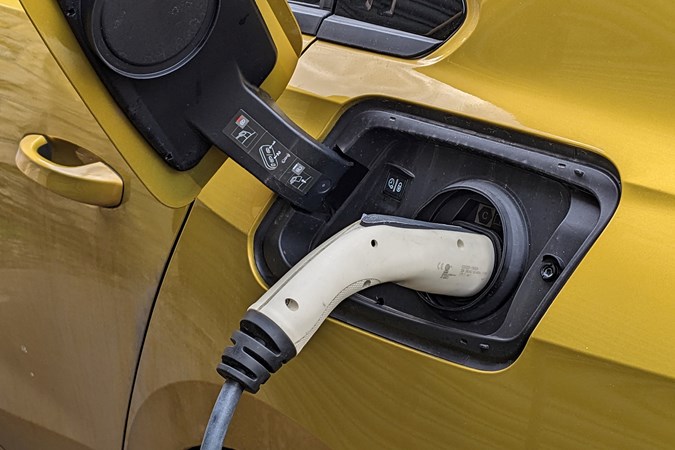
Using a combination of battery and petrol, on 50-80-mile days in hybrid mode, that improves significantly to 83.1mpg. One of the advantages of running in this mode is that the car tells you how much battery-only running you’re doing in a day, and that figure tends to hover around 40% with the EV juice depleted by 80 miles. What it doesn’t do is get anywhere near the WLTP claim of 256mpg – but in a later update I intend to see how I can really maximise this car’s PHEV potential.
Update 5: long-distance comfort and refinement
What’s the Astra like on longer runs? Did it turn our spines into dust?
The Astra is designed to cover long distances, and with the minimum of fuss. For one, if you’re a business user who covers 30,000 miles a year, you want to know that your car isn’t going to give you a bad case of tinnitus, or mangle your back into a state of perpetual pain.
Here’s another area where the Astra scores really well. For me, this is important, as I am prone to backache in less-than-perfect seats. What I’ve found with the Astra is that once settled in and the seat adjusted to my liking, I don’t need to touch the electrical adjuster again, and a 250-mile trip is rounded off any aches or pains. That’s often not the case with cars costing significantly more.
It’s not such a good news story in the back, though. My two six-foot sons both grumble about a lack of kneeroom and a slight feeling of claustrophobia behind the high-backed front seats. Given that the rival Ford Focus and Skoda Octavia, especially, are so accommodating in that respect, this is a disappointment, and probably the only chink in the Astra’s armour in this respect.
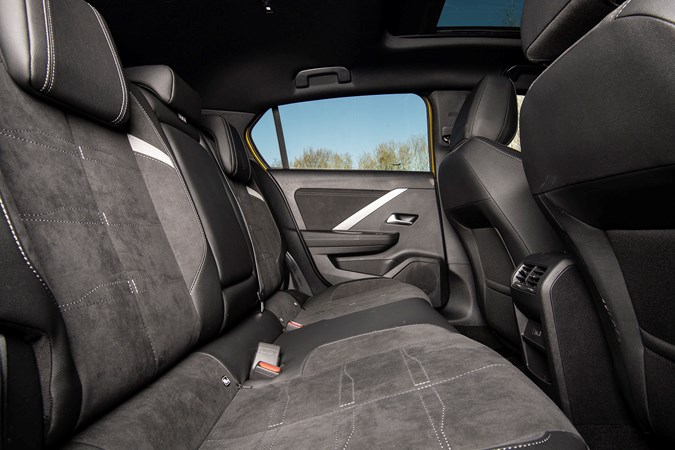
Another area where the Astra has really impressed is its long-distance refinement. Although the petrol-side of its plug-in hybrid drivetrain isn’t all that new or sparkly, the 1.6-litre four-cylinder engine is seriously muted. At motorway speeds, you can barely hear it at all, and around town and driven gently, it’s so quiet there are times where it’s nigh-on impossible to detect the shift between battery and petrol power.
It can get a little raucous if you really boot it, but given that it’s quick enough without trying, the times when you have to endure its reedy whine at high revs are few and far between. At speed, wind noise is also very well suppressed, and overall there’s an air of calm and civility that I would not have expected in this car before claiming ownership of it.
A final word should also be given to its suspension set-up. Although it’s closely based on the Peugeot 308, the Astra lacks a little of that car’s ride fluidity, with a firmer set-up you’d expect from a car with its engineering team based in Germany. But that autobahn-honed suspension set-up works really well of British motorways – and although it doesn’t exactly float along, it’s stable, composed and really rather perfectly set-up for long runs. Overall, here’s where I’d say the Astra is at its absolute best.
Update 6: second opinion
Parkers deputy editor Murray Scullion takes the reins for a few of weeks
I am, in some ways, the archetypal plug-in hybrid customer. I want a car capable of zero emissions local driving, but with a petrol engine for the motorway too. I also win bonus points for having access to an on-street charger and a wallbox at work, but no driveway so no private charging.
I can’t fault the Astra’s on board charger. I agree with Keith, it’s well worth the money. And the mpg – with a full charge – is impressive too. To be honest it’s also pretty frugal when running just on petrol. On my 85-mile commute, without a charge, I can just about make the on-board mpg creep into the fifties.
However. I’m writing this on a 14 degree May day. So I’d have thought the electric range would have crept up. But 20 miles on a charge is pretty much its maximum. Less on a motorway sweep.
We need to talk about the regen too. Specifically the grabby brakes. The transition from regenerative braking to old-school pad on disc is not subtle. Coming to a stop from a low creep without lurching forward violently as the brake discs kick in is quite the feat. Even after 1,500 miles I’m struggling to do it.
And the infotainment is proving annoying too. With Apple CarPlay (certainly with my phone anyway) connecting can be an issue. Most of the time you simply get in and it’ll load. But occasionally you need to go into the settings and select it. And occasionally it won’t load. And occasionally the screen will work but the audio will be coming out of your phone, not the car’s sound system. Speaking of which, certainly via CarPlay, it’s a bit rubbish. I can still maintain a conversation with a passenger using FULL VOLUME on Spotify via CarPlay.
I think there’s the bones of a really great car in there. The PHEV powertrain is nearly spot on, the battery just needs to go further and the brakes need a final bit of tweaking. While the infotainment honestly feels like it’s one software update away from glory.
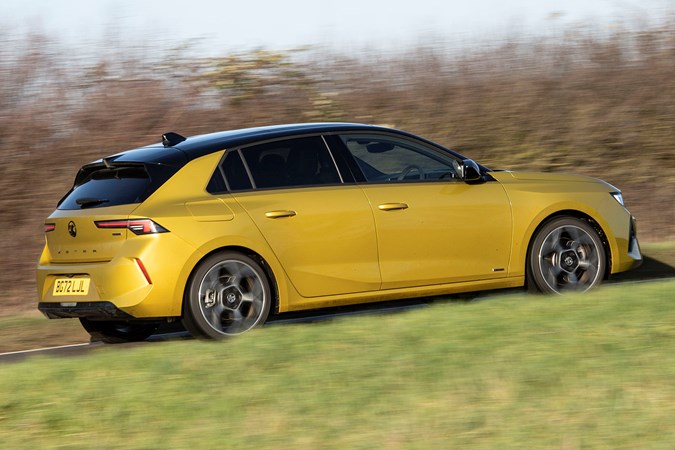
Verdict
Six months and two keepers in, and our favourable early impressions of the Vauxhall have been largely vidicated. The idea of the Astra being a worthy but dull hatchback have been blown into the weeds by the sharp styling and keen dynamics of this latest version. There’s strength in depth here, too, with a high-quality interior, and exceptional long-distance comfort and refinement.
Our gripes are limited to some foibles with the infotainment system – most notably when connected to Apple CarPlay and Android Auto – and the plug-in hybrid aspect of the Astra. Yes, it’s disappointing to note that its battery-only range doesn’t come close to the claims, and when driving in hybrid mode, it’s also disappointingly far off the official figures.
What we’ve learned is that the Astra is an excellent family hatchback with much more appeal than any previous model wearing the nameplate in generations. All that really lets it down is a cramped rear, less than brilliant boot space, and the weight, complexity and cost of its plug-in hybrid system. If you’re a city dweller and need a PHEV, then it’s good to know Vauxhall offers one – but it is not the best Astra version to buy right now.
Of course, the solution to that is to bypass that and buy one of the excellent petrol or diesel models that come in a much lower price…
Vauxhall Astra long-term test: scores on the doors
Model tested: Ultimate Plug-in hybrid 180
| Current mileage | 7,583 |
| Real-world average fuel economy | 41.7mpg (petrol only) 83.1mpg (hybrid mode) |
| Official combined fuel economy (WLTP figures) | 256mpg |
| Parkers ‘MPP’ (Miles Per Pound) calculation | 34.3 – 37.9 mpp |
| Car joined Parkers fleet | December 2022 |


